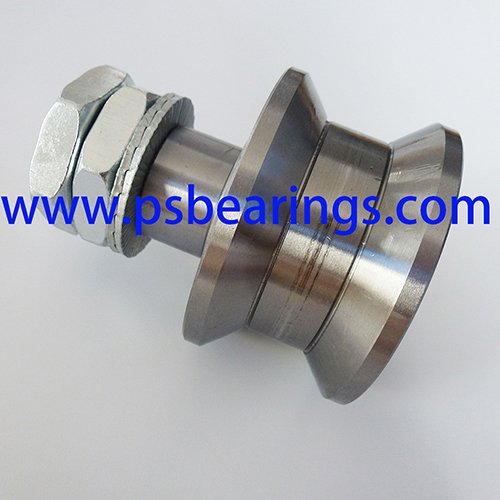Mastering Motion: A Comprehensive Guide to Needle Roller Bearings and Cam Followers
Understanding Needle Roller Bearings
Needle
roller bearings are an essential component in various mechanical
systems, offering high load-carrying capacity and excellent tolerance to
radial space constraints. These bearings comprise cylindrical rollers,
much thinner in diameter compared to their length, resembling needles.
Such a design enables needle roller bearings to support high radial
loads within a compact envelope.
Construction and Functionality
Constructed with precision, Needle Roller Bearings
consist of a thin outer ring, needle rollers, and a cage assembly. This
unique construction facilitates smooth operation, reduced friction, and
enhanced durability. The needle rollers distribute load evenly across
their length, ensuring efficient performance even under extreme
conditions.
Applications
The versatility of needle roller bearings finds applications across a spectrum of industries, including automotive, aerospace, industrial machinery, and more. From transmission systems to powertrain components, these bearings play a pivotal role in ensuring seamless operation and optimal performance.
Advantages
1. High Load-Carrying Capacity: Needle roller bearings can withstand significant radial loads, making them ideal for heavy-duty applications.
2. Compact Design: Their slender profile allows for space-saving installation, crucial in applications with limited radial space.
3. Low Friction: Reduced friction leads to enhanced efficiency and longevity, contributing to overall system reliability.
4. Versatility: Needle roller bearings are available in various designs and configurations, catering to diverse application requirements.
Exploring Cam Followers
Cam Followers, also known as track followers, are specialized bearings designed to follow cams or tracks on a machine. They consist of a stud with a thick outer ring, incorporating needle rollers or cylindrical rollers. Cam followers are integral components in applications requiring high radial and axial load capacity, along with precise motion control.

Types of Cam Followers
Cam followers come in various designs to accommodate different mounting configurations and operational requirements:
1. Stud Type: Featuring a threaded stud for easy installation, stud-type cam followers are suitable for applications demanding high radial loads and moderate speeds.
2. Yoke Type: Yoke-type cam followers incorporate a yoke or stud for mounting flexibility, making them ideal for applications with varying load conditions.
3. Crowned: Crowned cam followers are designed with a crowned outer surface to compensate for misalignment, ensuring smooth operation and reduced wear.
4. Caged: Caged cam followers feature a cage assembly to retain the needle or cylindrical rollers, enhancing stability and load distribution.
Applications
Cam followers find extensive usage in industries such as manufacturing, packaging, material handling, and more. They are commonly employed in conveyor systems, printing machinery, cam-driven equipment, and other applications requiring precise linear motion.
Advantages
1. High Load Capacity: Cam followers are capable of supporting significant radial and axial loads, making them suitable for heavy-duty applications.
2. Precise Motion Control: Their design allows for accurate tracking of cam profiles, ensuring precise motion control in various machinery.
3. Durable Construction: Built to withstand harsh operating conditions, cam followers offer long-term reliability and minimal maintenance requirements.
4. Versatility: With a range of configurations available, cam followers can be tailored to suit specific application needs, providing flexibility and performance optimization.
Conclusion
Needle roller bearings and cam followers are indispensable components in modern machinery, offering unparalleled performance, reliability, and versatility. From automotive drivetrains to industrial automation systems, these bearings play a crucial role in ensuring smooth operation and optimal performance. Understanding their construction, functionality, and advantages is essential for selecting the right bearing solution for diverse applications.
Comments
Post a Comment